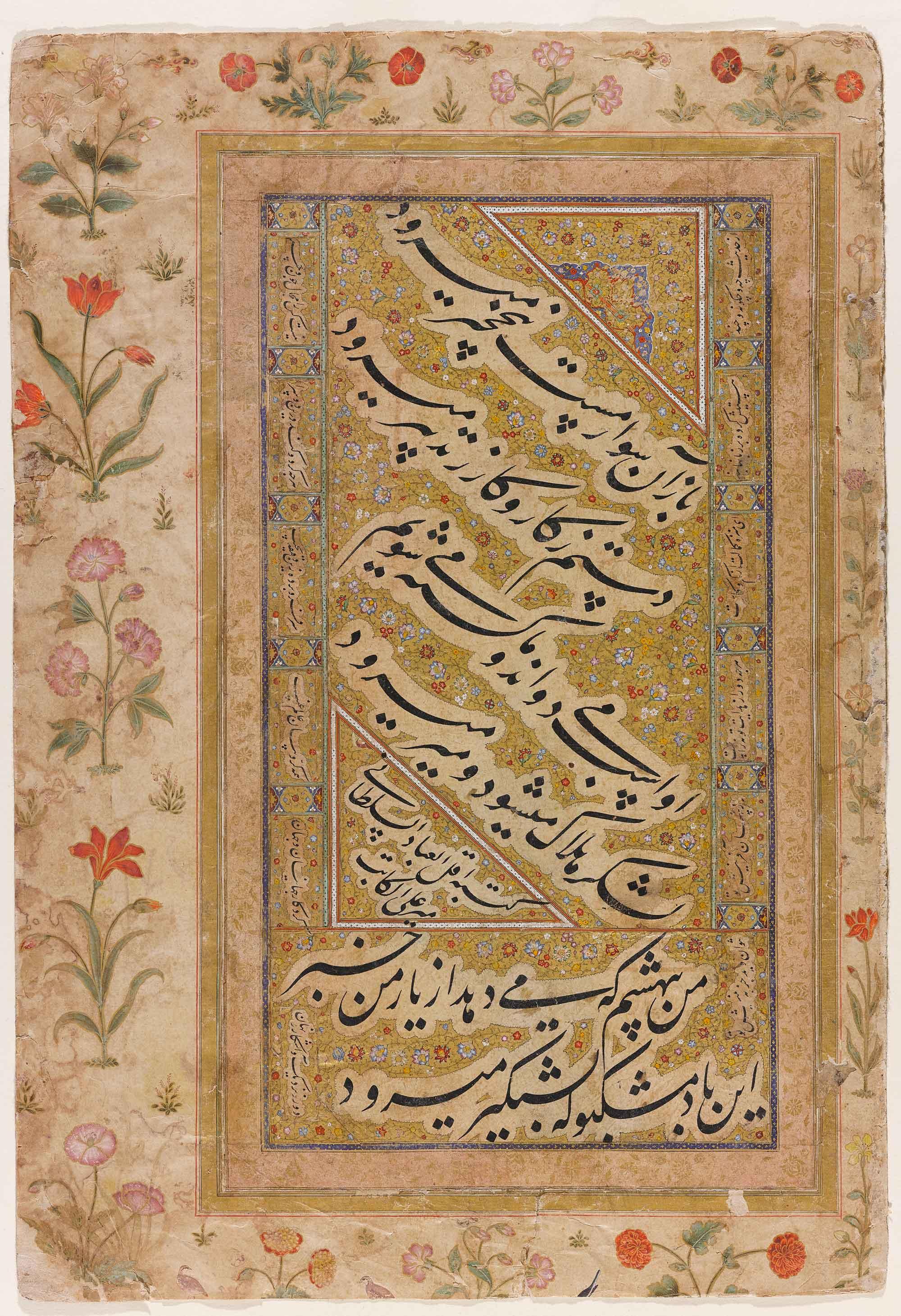Click on the image to zoom
Page of Nasta‘liq Calligraphy
- Accession Number:AKM351
- Place:Calligraphy: Iran, 1520; border: India (Historic Hindustan), ca. 1640
- Dimensions:36.9 x 25.2 cm
- Date:1520 (calligraphy); 1640 (border)
- Materials and Technique:Opaque watercolour, ink, and gold on paper
Not only did the Moghul ruler Shah Jahan (reigned 1628–58) have a keen interest and discerning approach when acquiring Chinese porcelains (AKM966) and Iranian jades but he was also an avid collector of paintings and calligraphic specimens. A fine example of calligraphy is this Persian quatrain penned by the prolific poet-calligrapher Mir ‘Ali al-Soltani (died 1544), who was famous for the diagonal format of his nasta‘liq poetry. The calligrapher, who is also reported to have designed the lion format of the Nad-e ‘Ali (AKM526), was extremely sought after by the Moghul sultans who would have mounted the prized calligraphic specimens in sumptuous albums (moraqqa‘) and surrounded them by borders with painted floral decoration.
Note: This online resource is reviewed and updated on an ongoing basis. We are committed to improving this information and will revise and update knowledge about this object as it becomes available.


